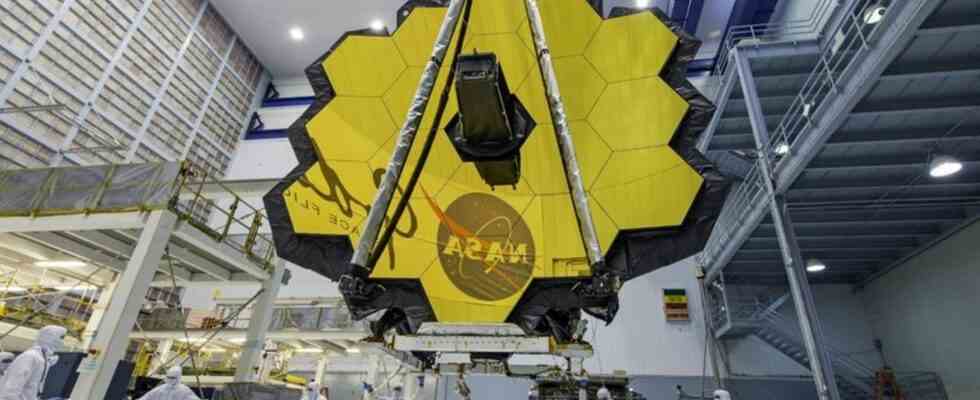space
James Webb telescope discovers its first exoplanet
The “James Webb” space telescope provides the deepest and most detailed insights into space to date. photo
© Laura Betz/NASA/AP/dpa
Insight into space: “LHS 475” – that’s the name of the newly discovered celestial body orbiting a star outside our solar system. And it shows similarities with the earth.
The James Webb Space Telescope has discovered its first exoplanet. The existence of the exoplanet “LHS 475” had previously been indicated, and now it has been confirmed for the first time with the help of the telescope, the US space agency Nasa said. “LHS 475” has almost exactly the same diameter as our Earth and is about 41 light-years away. It is still unclear whether the exoplanet has an atmosphere similar to our earth’s atmosphere.
For a long time, astronomers only knew about the planets orbiting our sun. The first exoplanets – celestial bodies that usually orbit a star outside our solar system – were only confirmed in the early 1990s. Nasa experts assume that there are hundreds of billions of exoplanets in our galaxy, the Milky Way.
The “James Webb” telescope was built jointly by the space agencies in Europe (ESA), the USA (Nasa) and Canada (CSA) and was launched into space at the end of 2021 on board an Ariane launch vehicle from the European spaceport in Kourou in French Guiana – after there had previously been cost explosions and repeated postponements. The telescope’s first images were released in the summer of 2022, providing the deepest and most detailed insights into space to date.

